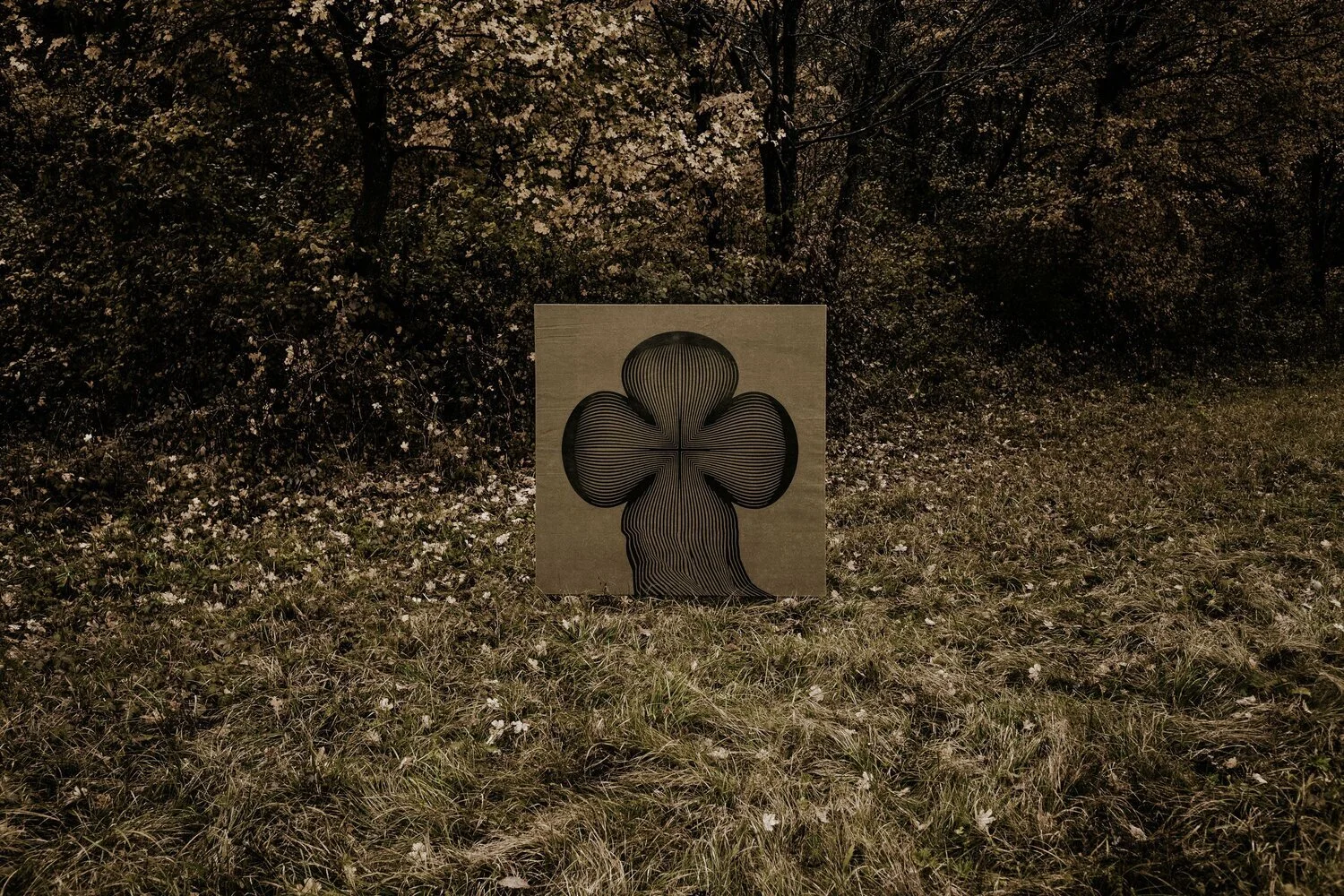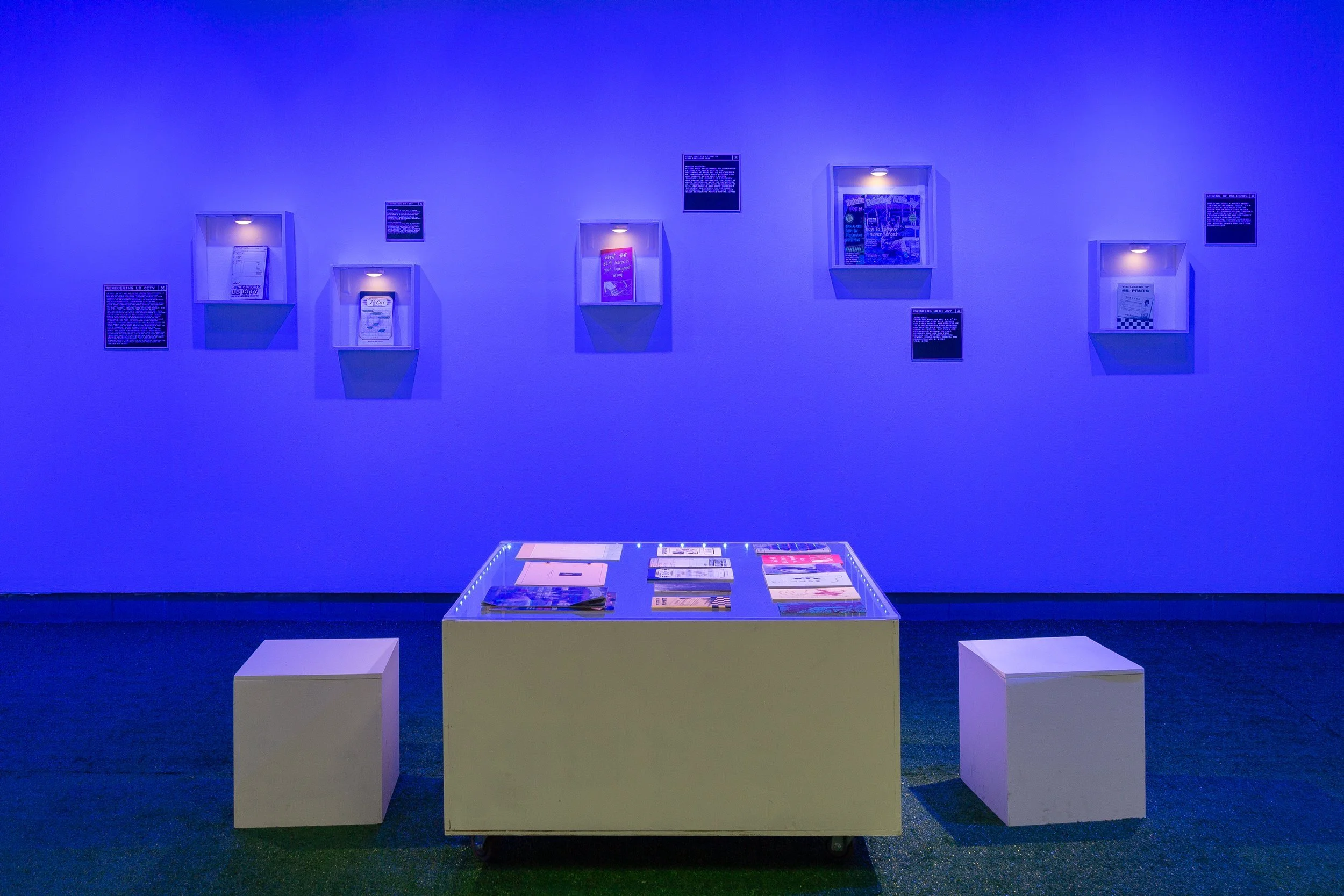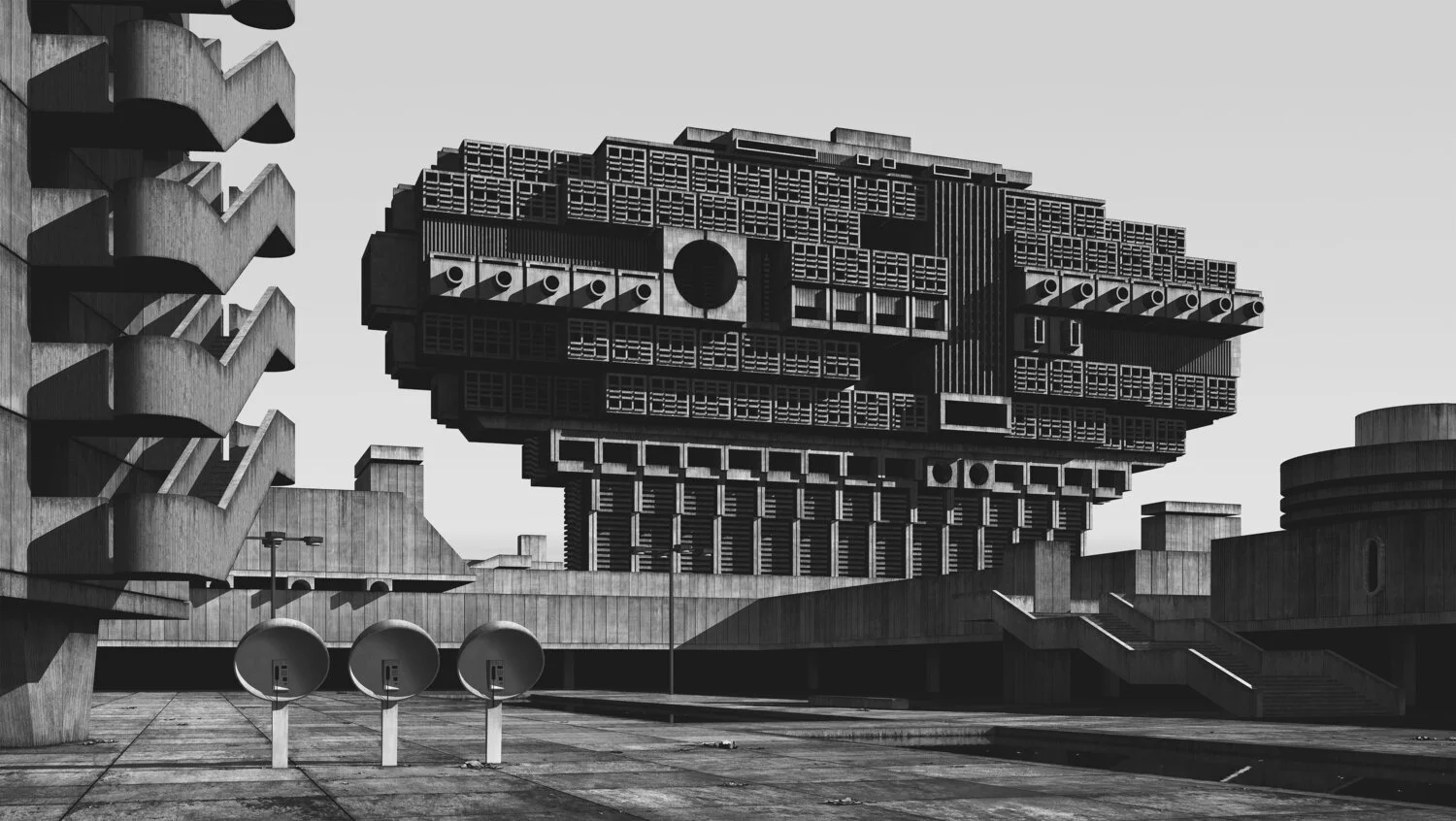10 Questions with István Dukai
Featured Inner COVER artist in ISSUE08
After spending 15 years in the world of graffiti, Istvan Dukai started his solo career as a graphic artist. He gained his knowledge in fine arts and graphic arts mostly by self-taught. As a freelancer he works on logo, abstract graphics, and nonfigurative pattern designs.
His very own style has its roots mostly in geometric tradition, the philosophy of constructivism, and op-art. The minimalist way he uses colors and forms, the repetitive rhythm – which he skips occasionally but wittingly – results in unusual and illusion-like forms in the plane.
The fundamental principle of his compositions is reduction, which is based on natural elements being stylized to geometric shapes and the diverse ways of combining these elements. Sensuality also plays a key role in his pictures. He has opened towards interdisciplinary fields: his work is often used on different materials hence he became one of the top graphic designers and art directors for several European-based brands.
István Dukai Portrait - © Photo by Pinewood Lifestyle
ARTIST STATEMENT
Some experiences of the artist are often reflected in his art.
In particular, the curfew during his childhood in Yugoslavia shaped by the Balkan war came to the forefront recently due to parallels to the current „quarantine-life” during COVID: the feeling of loss, confusion, and uncertainty when confined to our trusted space. He is to convey a transcendent calm and order in these artworks—something eternal amidst troubling times. Textures and forms of his childhood are a strong influence, such as roughly woven linens of military tents, basic motifs of folk art, and the bold shapes of brutalist architecture in post-war Yugoslavia. OP-Art, with its repetition of geometric shapes, is a salient inspiration.
He uses strongly abstracting forms and muted colors. Such austerity underlines the calm atmosphere of his works. Contrasts and clashes define his art. These works are digitally designed, yet he uses traditional printing techniques and materials.
This duality emphasizes the thresholds of cyber-space and reality, of digital and human connections. Contrasts between light and dark, between contained forms and disruptive lines, express calm and upset, freedom and confinement, life and death.
MOIRÉ Study #1, acrylic on wood, 30x40 cm, 2020 © István Dukai
GET YOUR LIMITED EDITION PRINT >>
INTERVIEW
You started in the field of graffiti and later approached graphic design. Would you tell us more about your artistic development so far?
The feeling of total freedom is what I loved about graffiti. It was a rebellion; I could do whatever I wanted without any expectations or measure up – I mean literally. For me, it was mostly experimentation and gaining new experience; and it was the same thing when I got into computer graphics software more seriously. It is also weird that basically, I started to showcase my first works on the streets for the wider public, then I ended up having my latest ones in private collections of art dealers. To be honest, I don’t know precisely how and when, but at one point, I just realized that all of a sudden, my digital designs started to merge with my manual ones. I still work with this method, I feel comfortable about it, and I feel that it is mine.
What is important for me is to pay attention to the right proportion and the balance between them, so none of them gets too much. That is why symmetry keeps reoccurring in my works and plays a key role.
What is your aim as an artist?
I think, maybe more or less, but all artists are individualists. It might result from creating a solo, being a bit introverted, or getting lost in their inspirational bubbles. Obviously, there may be exceptions, but I work alone, unaccompanied as well.
What I experience when I create is a truly amazing and astounding feeling for me. And if the given piece can pass on only a tiny fraction of this to the audience, then it completely fulfilled its purpose I originally intended.
RUR-SUS, acrylic on hand woven linen, 98 x 152 cm, 2020 © István Dukai - Photo: Pinewood Lifestyle
Your works are both soothing and hypnotizing. You cite as references both folk art and post-war Balkan Brutalism, but also Op-Art. How did you get to this mix? And what messages do you want to convey with this aesthetic?
Well, these were the most intensive pictorial impressions I came across in my life by now. In other words, they could be defined as my ‘indirect visual education’. I clearly remember that I was playing in the attic as a little kid, and I found prints of Vasarely, which had been bought by my Mom. I was staring at them for hours, mesmerized. It was love at first sight.
I had the same impression of the Brutalist style. I grew up in a tiny and relatively isolated village in Vojvodina. When we had trips in the neighborhood, I got amazed by the huge concrete buildings and structures.
Regarding folk art, the different motifs and techniques were right in front of me all the time. I believe they just got imprinted in my subconscious unintentionally.
Obviously, I know what my art means to me, what their message is for me, what kind of feelings it can cause in me. But I don’t want to force or influence the audience to share my opinion. I am curious about their own way of thinking.
My pictures might generate different emotions depending on the mood and the psychical state of a person - whether people would be calm, frustrated, happy, depressed, frustrated, or with whatever feelings. This is what I love about abstract/geometrical art. It doesn’t necessarily impact your current mood, rather the opposite: your current mood composes the meaning of the picture, which could be completely different on another day and with another state of mind.
In your latest works, you compared the curfew that was in place during the war in your childhood with the latest events due to the Covid pandemic. One underlining and recurring theme is not only isolation but rather the feeling of loss and uncertainty. How much does art help you cope with those feelings? Do you use art to escape from reality, even just for a little while?
It would be hard to state how I feel exactly during creation or, let’s say, when I am deeply lost in creating. Way too many feelings break up at once, but after a while, somehow, they start to merge into one single undefined emotion, which overwhelms me. Then average, common things won’t really affect me; I cannot sense time, for example. It is just us together: me and the given art piece. I guess it is fair to say that many times I daydream about this alternative reality when I have to cope with the real one. I refer to it as my asylum. This, plus true human connections and bonds, keeps me sane and alive in this world.
SANCTITAS II, acrylic on military tarpaulin, 135 x 135 cm, 2020 © István Dukai - Photo: Pinewood Lifestyle
Contrasts seem to be another recurring theme in your art. What are the major contrasts you experience in your life right now?
In general, I would say the biggest contrast roots in existence itself; my everyday thoughts revolve around life and death a lot. These come hand in hand with withering and the possible definition of timeless things.
I also contemplate a lot on how paradoxical our lives are these days, how we experience both freedom and unwanted restrictions at the same time. Honesty, it is pretty tough to cope with this, although I know I am not the only one in this boat.
Where do you find inspiration for your work, and what is your creative process like?
Inspiration can come from pretty much anywhere, and it is not even necessary for it to be visual. Most of the time, the work of other artists from different art fields provides a source of motivation, but human relationships also inspire me. Sometimes the most simple things have the biggest effect on me: a gentle touch, a cute smile, a few kind words…
When I get into the mood, I start to chalk out immediately. This usually starts as a digital process (I never sketch on paper). If I cannot start and get to the bottom of the project, I can hardly concentrate on anything else. Music also helps a lot during the process, as it catalyzes and accelerates the dynamism of my workflow.
Over the past year, our world has been shaken to the bone, and the art world was affected too. How do you feel about the current situation?
Do you see any positive changes happening during this time? Besides the various restrictions occurring in our private lives, the current pandemic situation brought me just positive things in the work scene. Although I wouldn’t be able to tell how it could be different otherwise, I mean if this improvement was due to the situation, or it would have happened anyway.
My studio receives better and better orders, pitches, and graphical projects from all around the world, but meanwhile, I am able to reserve some quality time to deal with my own autonomous art work as well. This is really important for me, and this is the kind of balance I always aimed for.
SEXUM, acrylic on hand woven dyed linen, 85 x 112 cm, 2020 © István Dukai - Photo: Pinewood Lifestyle
How did you stay active and engaged with your public over the lockdowns and the global pandemic?
Obviously, online communication and digital platforms helped my communication a lot. Although I should note that the pandemic didn’t change my workflow or my work ethic. I mostly had online discussions with my international clients before, so its efficiency didn’t catch me by surprise.
I believe that there is also something inspirational in this lockdown, and with continuous mental concentration and physical readiness, there can be a lot of potential in it.
As a graphic designer and digital artist, what do you think of NFTs? Do you see this more as an opportunity or a threat?
I have mixed feelings about this, so I will wait to see how it turns out. I definitely find it beneficial that the copyright could be implemented in all our art works which ends up on the internet.
Connecting humans and cyberspace - especially when it comes to social media - should be limited and less exposed. It is good for business, but we should be cautious with what we share regarding our private lives.
MOIRÉ Study #2, acrylic on wood, 30x40 cm, 2020 © István Dukai
MOIRÉ Study #2, acrylic on wood, 30x40 cm, 2020 © István Dukai
Finally, what are your plans for the future?
I have put together several future exhibitions, which seem to be ready for launch and to be showcased to the greater public.
I also have new projects with fashion houses to design their own textile prints or refresh their classic silhouettes with up-to-date patterns – these are paid collaborations but usually end up being love projects. I really like these. Hopefully; there will be a lot more to come in the future.
I also invested in some old printing machines, and I am looking forward to doing some experiments and tests with them.
And it would be lovely to spend more time with my family, my friends, just to be surrounded by people, and if it were possible and safe, I would travel more.



























